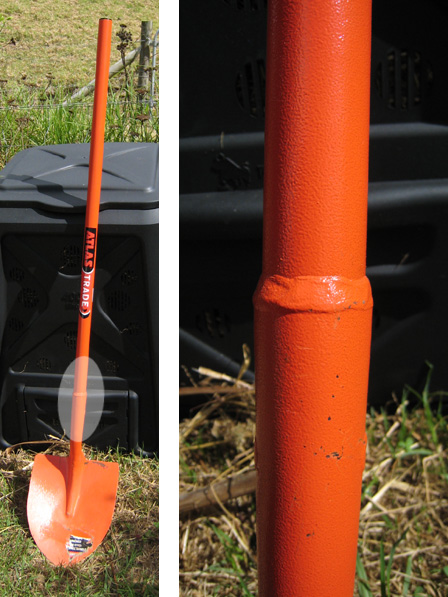Finally, here is the update on my tomato preserving adventures. As a novice preserver, I’m pleased (relieved, even) to report that the tomato canning exercise seems to have been a success. Special thanks are due to Mum and Auntie Linda and that trusty Kiwi classic, the Edmond’s Cookery Book!

Preserved tomatoes
To date, I have canned seven quarts of tomato puree in glass preserving jars with dome seals, using the “overflow method.” These 7 jars are the result of boiling down some 14 kilos of tomatoes.
This is what I did:
*Cut up the tomatoes with skins still on, and made a puree using a stick blender.
*Filled a large stock pot with the puree, and simmered it for a couple of hours to reduce.
*Added a little salt.
*Heated the preserving jars in a 120 degrees celsius oven for 30 minutes.
*Put the seals in boiling water for 5 minutes.
*Took hot jars out of the oven one at a time to be filled with hot puree and sealed.
*Added 1/2t of citric acid to each jar to ensure sufficient acidity to inhibit growth of bacteria.
*Filled each jar to the very top (almost overflowing).
*Placed hot seal on top of jar, using tongs.
*Wiped off any excess juice, and fixed the seal in place with a screw band.
*Checked the jars after 12 hours of cooling to see if they had sealed properly.
*Removed screw bands and labelled the jars.
I’m sure we will value the taste that the tomatoes will add to our winter fare. Since sun drying (and even storing dehydrated products) can be problematic here due to the high humidity, and freezing uses so much energy, canning some puree seems like a good way for us to preserve our tomatoes. Fortunately, canned tomatoes do not require added sugar for successful preservation. We opted not to add other ingredients to the puree, in order to keep it as simple and versatile as possible.
There is so much going on here at the moment, and lots of posts I’d like to write for the Farmlet website. My brother and sister were visiting here for about ten days, so we took lots of time out to have fun with the family. We had a wonderful time, and I miss my brother and sister now that they are gone. Still, it’s good to be getting back to the regular work schedule around the Farmlet — not to mention a more regular blogging schedule!



